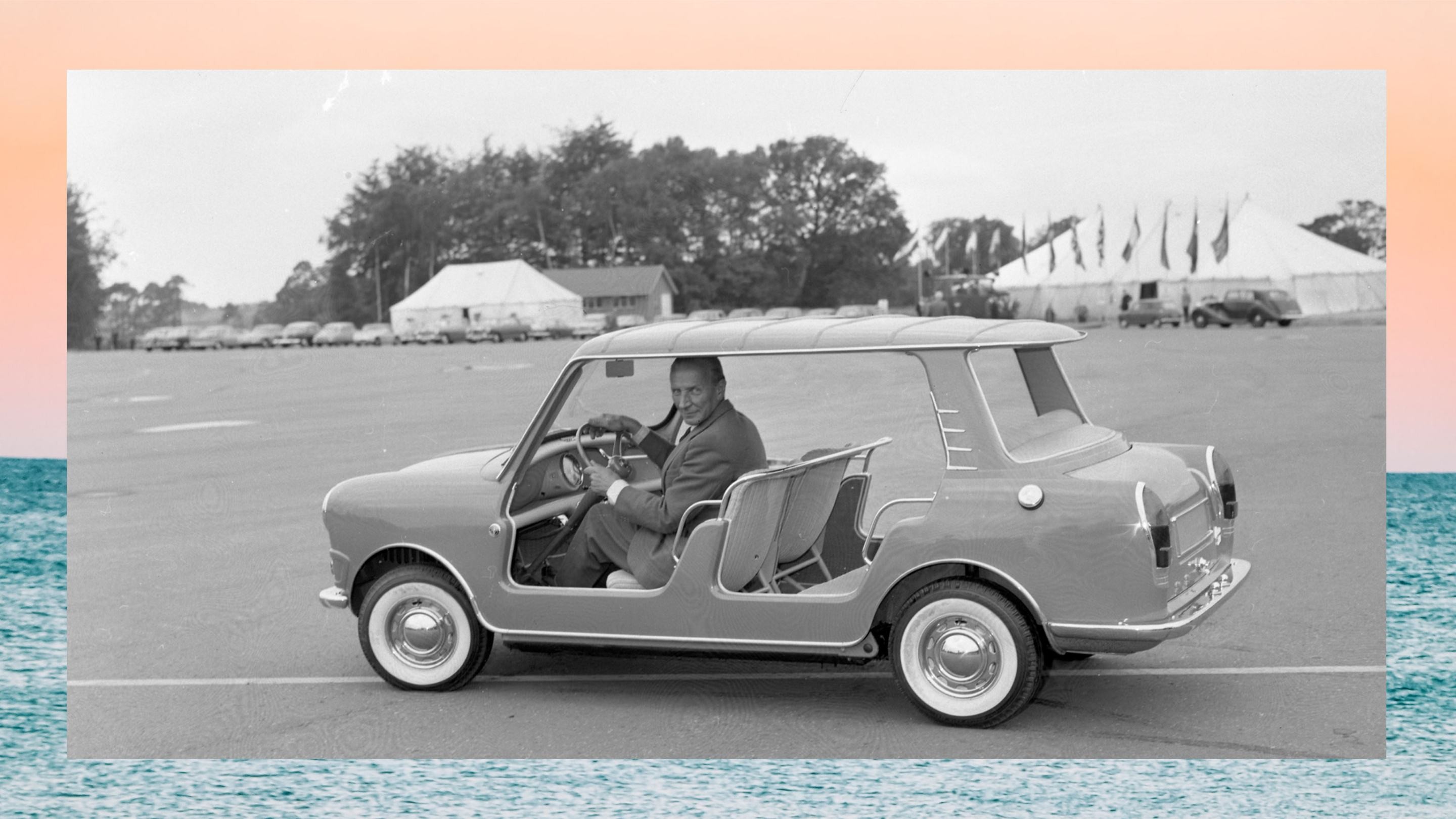เครื่องมือจัดการการอนุญาตของคุณให้ใช้คุกกี้ของเรากำลังออฟไลน์ชั่วคราว การทำงานบางอย่างที่ต้องใช้คำยินยอมให้ใช้คุกกี้อาจหายไป

MAKING WAVES. THE MINI BEACH CARS.

But of course, luxury hotels and golf courses – in countries where rain is an infrequent phenomenon – were also potential buyers of these types of automobiles. Soon enough, a lot of different beach cars were created, not just by Fiat, but also by the likes of Renault as well.
But that isn’t the only reason why they made sense for BMC. At the time, they were looking for some exciting and exceptional cars to drum up interest in the brand across the United States. And the Mini Beach Cars seemed perfect for that purpose, so much so that BMC’s San Francisco outlet even organised a one-off race with these cars, and with drivers such as Stirling Moss, Juan Manuel Fango and Pedro Rodriguez. While this generated some media coverage, the race probably turned out to be more perilous than hoped, as some cars rolled over and ended up on their roofs.
Even though one might dismiss these automobiles as toy cars for the rich, there was a very strong marketing and business case for their creation. And thus, the Longbridge Experimental Department of BMC was tasked with creating them. They were built between December 1961 and March 1962. Apparently, BMC considered making the cars for order, but that didn’t come to be. Their role was later filled with the Mini Moke, which started production in 1964.

How many of these cars were created altogether is debatable, with most people agreeing that there were less than 20 overall. The Longbridge production records show that 14 Beach Cars were made from 1961 to 1962, all with left-hand drive. There was also an extra brown tan one – in right-hand drive – which was loaned to Elizabeth II who drove it at Windsor Castle. Also important to note is that not all Mini Beach Cars were made out of the regular Minis. It is known that at least one Mini Beach Car was built from the Wolseley Hornet or the Riley Elf, the more luxurious three-box design versions of the Mini, sometimes referred to simply as a booted Mini. Alec Issigonis even famously drove one of these cars at the Mini Cooper launch press preview at the Chobham (now Longcross) test track in July 1961. So, it is almost certain that at least 16 Mini Beach Cars were built by BMC, but Pavesi, the Milanese coach builder, also created beach cars based on the Mini for specific customers to drive along the riviera.
Although the original Mini’s designer approved of the cars’ design, he was not responsible for it. Instead, it was BMC’s Chief Stylist, Dick Burzi – himself of Italian heritage – who created the floating roof, without any B-pillars. Originally, the car was to have no roof but rather a canvas which could be assembled and disassembled as necessary. However, this idea was abandoned in favour of the more permanent feature.
The lack of doors made the car look light and allowed for the air to move unobstructed. He added chrome handles – on the dashboard as well – for easier access and – at least in the original design – wicker seats, a choice which was also used in the Fiat Jolly.
